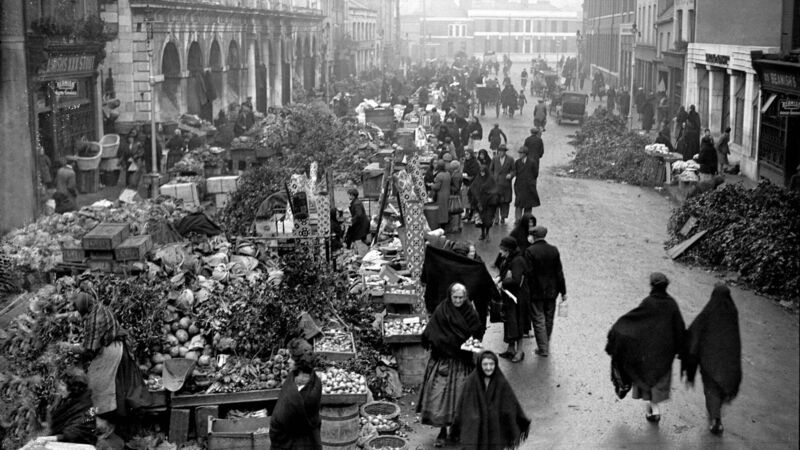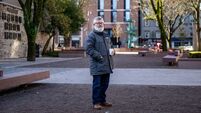Michael Moynihan: Cork is unique, and I forecast that the weather will prove it

One of the great myths when you journey beyond Cork’s borders is the allegation that people from the Rebel County have a regard for their own place that is somehow exceptional and exclusive.
Seriously.
The narrative goes along these lines: Cork people will never pass up an opportunity to tell outsiders that, yes, they are from Cork, and, at the drop of a hat, they will detail the many advantages enjoyed by Cork people, advantages that are, sadly, not available to other mortals. (This is not confined to Cork people, by the way. John Updike once wrote that the “true New Yorker secretly believes that people living anywhere else have to be, in some sense, kidding”.)
This notion about Cork people has even been lampooned by comedian Tommy Tiernan in his routine about the impossibility of the president of Ireland ever coming from Leeside, on the basis that if said president ever addressed the UN, for instance, the opening lines of said speech would be to announce himself or herself as the president, before adding, “ ... but, more importantly, I’m from Cork”.
All in all, this is an idea that has taken root firmly: Not so much that Cork people are singularly convinced of Cork’s convincing singularity, but that their commitment to this mode of thinking outstrips the commitment of others to their places of origin.
I have to say, I disagree.
Cork people are far less guilty than others of celebrating their homeplace. Furthermore, in the country’s acknowledged forum for national discussion, hamlets and conurbations far smaller than Cork have louder advocates and more passionate partisans.
I refer to people who speak of their own native places in terms that make the Athens of Pericles seem a shoddy backwater in comparison, the Vienna of Freud and Klimt a humdrum provincial crossroads.
Allow me to explain.
In a previous life, yours truly worked in Leinster House, described by one of its occupants as the cockpit of democracy in this country. (When Christmastime came around and the annual parties kicked off, it became more like the moshpit of democracy in this country, but that’s for another day.) A far more common phenomenon was the hymn to one’s own place, usually delivered in a strange combination of tones — at once plaintive and pleading, while also sounding a boastful and celebratory note.
This puzzled me, until one night, in the Dáil bar, a Cork representative introduced me to the hard facts of life about those who liked to preach the staggering virtues of some of these small settlements.
“I’ll tell you something that’ll put you on your heels. They actually believe that nonsense they’re talking. They think these industries and colleges and hospitals should be put in these places. That they’d be better off there than in . . .”
“Cork?”
“Don’t laugh. I’m serious.”
I wasn’t laughing. And I knew he was serious.
The reflexive move for any Cork person hearing the delights of (insert name of village or town here) extolled is to retaliate in kind.
Any advantage or benefit accruing to inhabitants of this supposed Eden is matched and exceeded by those afforded by life in Cork. Whatever appeals to you in your ho0800meplace, it cannot compare to the air/views/roads/cakes on offer in Cork, why let me tell you ...
This is entirely the wrong approach, of course. A lofty disregard, or polite condescension, is the best response for such ruffians, but if you find your blood is running too high, consider the following outline as a more mature response.
Native or visitor, when you walk down the South Mall, the remnants of the waterway that once filled this broad thoroughfare are obvious.
You need only look at the steps running up the first-floor offices on the Imperial Hotel side of the street to see where the ships were once berthed. Anyone who has read books like Francis Spufford’s Golden Hill will form a mental picture of fussy clerks hurrying down those steps to inspect cargoes, and brash captains crashing up the same steps with their bills of lading, eager to be off about the town with their money.
The concentration of commercial enterprises along the street is hardly an accident, given that natural hinterland, but the influence of water on the city’s business life is visible in other places, as well.
For instance, Cornmarket St was a waterway in the 18th century — the clue is in the commonly-used name, the Coal Quay — and linked up with another waterway, which would eventually become the Grand Parade.
This was a natural disembarkation point, particularly for goods that had been processed through the old custom house in the city, which occupied a site near the modern Opera House: Christy Ring Bridge was centuries in the future when customs officers were carrying out their inspections on cargoes that had come up the North Channel. This was a time — the 18th century — when the city existed primarily along the spine of North Main St and South Main St, and suburbs were unheard of.
Towards the end of that century, the merchants in places like the South Mall decided to reclaim the centre of the marsh, the area east of those main streets, and what we now know as St Patrick St was created.
So far, so good.
Water can resume its mastery of the Mall, the Grand Parade, the Coal Quay, and St Patrick St and life in Cork will continue largely unperturbed. Canoes and kayaks may be needed, and a few vaporettos wouldn’t go amiss — no gondola jokes, thanks — but life will continue much as it does now.
Anyone questioning Cork’s uniqueness now has the ultimate answer.
It’s not so much that the city is future-proofed against
future events: It’s future-looped against them. The conversion of miles of waterway to streets is revealed to be temporary, and nature only needs to be given its head for a seamless return to the original arrangements.
In the end, this is why Cork people don’t need to make so much noise about how unique their own place is.
Less fortunate souls can make their case, but time will be the true arbiter. And the weather.












